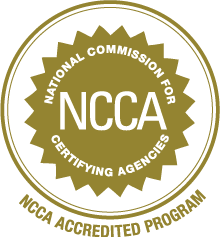Information for the Public

Public Protection and Patient Safety: Our Mission and Priority
As a non-profit agency, the NREMT is committed to protecting the public and supporting the EMS profession.
The average American citizen doesn’t plan on getting sick or injured. But when sudden illness or injury strikes, the public expects and deserves a quick response and the best care possible. How can those who are responsible for the public’s safety be sure they are providing competent, safe and effective care?
The single most important goal of the National Registry of Emergency Medical Technicians (NREMT) is to offer assurance that EMS personnel providing treatment to patients—at their highest moment of need—are competent.
The NREMT accomplishes this goal with a staff that includes highly qualified EMS experts who understand what is involved in treating patients in the out-of-hospital setting. They are responsible for implementing a process that involves meeting specific educational requirements, developing legally defensible and psychometrically sound exams to measure entry-level competency, implementation of a criminal conviction policy and more. This process is necessary due to the critical nature of the EMS profession and the level of trust placed on EMS personnel.
National Certification for EMS Professionals
Prior to the 1970’s, a national standard of EMS care was non-existent. With the founding of the NREMT in 1970, the establishment of national standards was made possible. Consistent competency standards set by the EMS community mean patients can expect the same quality of care from competent EMS providers. Regardless of whether EMS providers are volunteers or career-based, or located in urban or rural settings, NREMT certification provides a national definition of the level of EMS competency—a standard for comparison, improvement and benchmarking.
The NREMT provides certification services for all nationally identified EMS levels:- Emergency Medical Responder
- Emergency Medical Technician
- Advanced Emergency Medical Technician
- Paramedic
Learn more about the important role of certification, and the difference between certification and licensure.
Exams that Measure Competency
Because the top priority of the NREMT is the safety of the American public, the NREMT is continuously researching methods for the most accurate, precise and fair method of measuring candidate competency. Thousands of hours are devoted each year by experts from the EMS medical community on question development, validation, practice analysis, and standard setting. In this way, exams can accurately measure the competency of EMS candidates. Because of its non-profit status, all funds collected support the NREMT testing functions and are reinvested into the EMS community.
In addition, the NREMT is committed to using the best technology available. That's why the NREMT professionals and the EMS community team up with psychometricians to design and develop tests that precisely and accurately assess a candidate's competency.
The NREMT is dedicated to serving EMS by upholding the integrity of the profession. In turn, the American public can receive the consistent, quality care they deserve. The NREMT is proud to serve its country in this manner.
INTEGRATION OF NREMT AND THE NATIONAL EMS SYSTEM
The EMS Dispatcher then sends the appropriate EMS professionals to the scene. These professionals may be educated as Emergency Medical Responders (EMR), Emergency Medical Technicians (EMT), Advanced Emergency Medical Technicians (AEMT), or Paramedics. The make-up of an EMS response team is a local decision based upon local resources and the priorities of those who fund the resources. EMS professionals are serious about providing the best possible care under the best possible circumstances.
When EMS professionals are called, the injured or ill person is often transported to the hospital in an ambulance. EMS professionals work under protocols approved by local physicians. Many of these doctors are members of the National Association of EMS Physicians. The doctor oversees the care of patients in EMS systems, and is knowledgeable about patient care interventions and how EMS systems deliver care. Typically the doctors work in conjunction with local EMS leaders to assure quality patient care.
Emergency Medical Services may be provided by a fire department, an ambulance service, a county or government-based service, a hospital, or a combination of the above. EMS professionals may be paid or serve as volunteers in the community.
Every state in the Unites States has an EMS lead agency or State EMS Office. These offices use their websites to provide information to the public. State EMS Offices have a great responsibility and are in place to assure the general public receives adequate patient care. State EMS Offices are funded by state legislatures. Each state has a state director and these officials are members of the National Association of State EMS Officials.
State EMS Offices issue licenses to EMS professionals and ambulance service providers, along with a variety of other tasks. Currently 46 states require their EMS professionals to be certified by the National Registry of EMTs in order to obtain a license to practice as an EMS professional in their state. Some states require their EMS professionals to maintain certification with the NREMT as part of the continued license; others have their own license renewal process. All EMS professionals are required to complete continuing education. The Commission on Accreditation for Pre-Hospital Continuing Education (CAPCE) establishes guidelines for approval of courses and helps assure that EMS professionals receive a quality educational experience.
The National Highway Traffic Safety Administration, Office of EMS of the US Department of Transportation (DOT) sets the lead in establishing EMS education standards. The Congress has not designated or funded an EMS lead agency at the federal level, so EMS works with many federal agencies to help guide some national EMS agendas and issues.
There are over 1,000,000 EMS professionals delivering care in this nation and there are a number of EMS agencies that help EMS systems provide better patient care. These include the International Association of Fire Fighters, International Association of Fire Chiefs, the American Ambulance Association, the National Fire Academy , the Commission on the Accreditation of Ambulance Services and the American College of Emergency Physicians. The National Registry of EMTs works with these organizations to assure standards meet public expectations for patient care. Everyone in EMS is involved in meeting these goals.
EMS professionals are represented by a variety of organizations depending on where they work. The National Association of EMTs represents EMS professionals from all types of services, (private, fire, volunteer, rural, urban, men and women) whereas other EMS professionals are represented by organizations such as the International Association of Fire Fighters, the International Rescue and Emergency Care Association and the National Volunteer Fire Council. Many states also have EMS professional associations.
The NREMT encourages every American citizen to support or become involved in EMS.
NCCA ACCREDITATION
This is the highest assurance that the health, welfare and safety of the public is being protected through a credible examination and certification process. NCCA accreditation also means that the NREMT complies with the standards found in the "Standards for Education and Psychological Testing.” This document was developed by the American Psychological Association (APA), American Educational Research Association (AERA) and the National Council on Measurement in Education (NCME).

GOVERNED BY A BOARD OF DIRECTORS
Organizations that nominate members to the Board of Directors
- American Ambulance Association
- American College of Emergency Physicians
- International Association of Fire Chiefs
- National Association of EMS Physicians
- National Association of EMTs
- National Association of State EMS Officials
Liaison Organizations
- American College of Osteopathic Emergency Physicians
- American Heart Association
- American Red Cross
- Committee on Accreditation of Educational Programs for the Emergency Medical Services Professions
- Continuing Education Coordinating Board for Emergency Medical Services
- Emergency Nurses Association
- National Association of EMS Educators
- National Highway Traffic Safety Administration
- National Volunteer Fire Council
- U.S. Air Force Medical Service
- U.S. Army Medical Corps
- U.S. Navy
COMMITTED TO IMPARTIALITY
As the Executive Director of The National Registry of Emergency Medical Technicians, I am committed to ensuring that personnel, vendors, and others involved in our certification activities understand the importance of impartiality, nondiscrimination and potential conflicts of interest.To reassure that NREMT continues to act impartially, we conduct on-going assessments to identify and address any risk that may result in a conflict of interest or imply a potential threat to impartiality. Policies and procedures are implemented for individuals involved in our certification activities to sustain a consistent and fair process. We pride ourselves on being fair and objective when dealing with candidates and applicants seeking the NREMT certification.
William Seifarth
Executive Director

